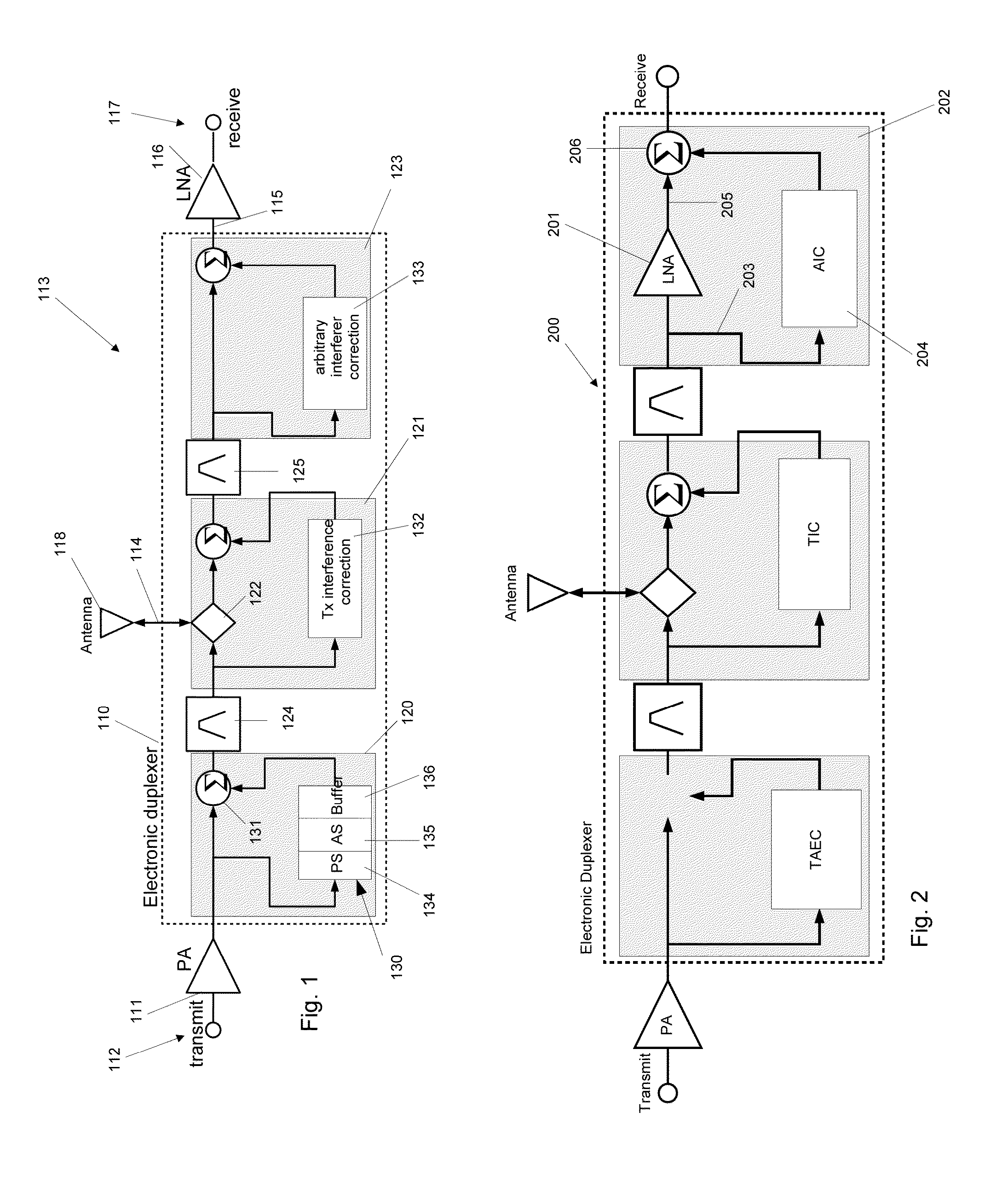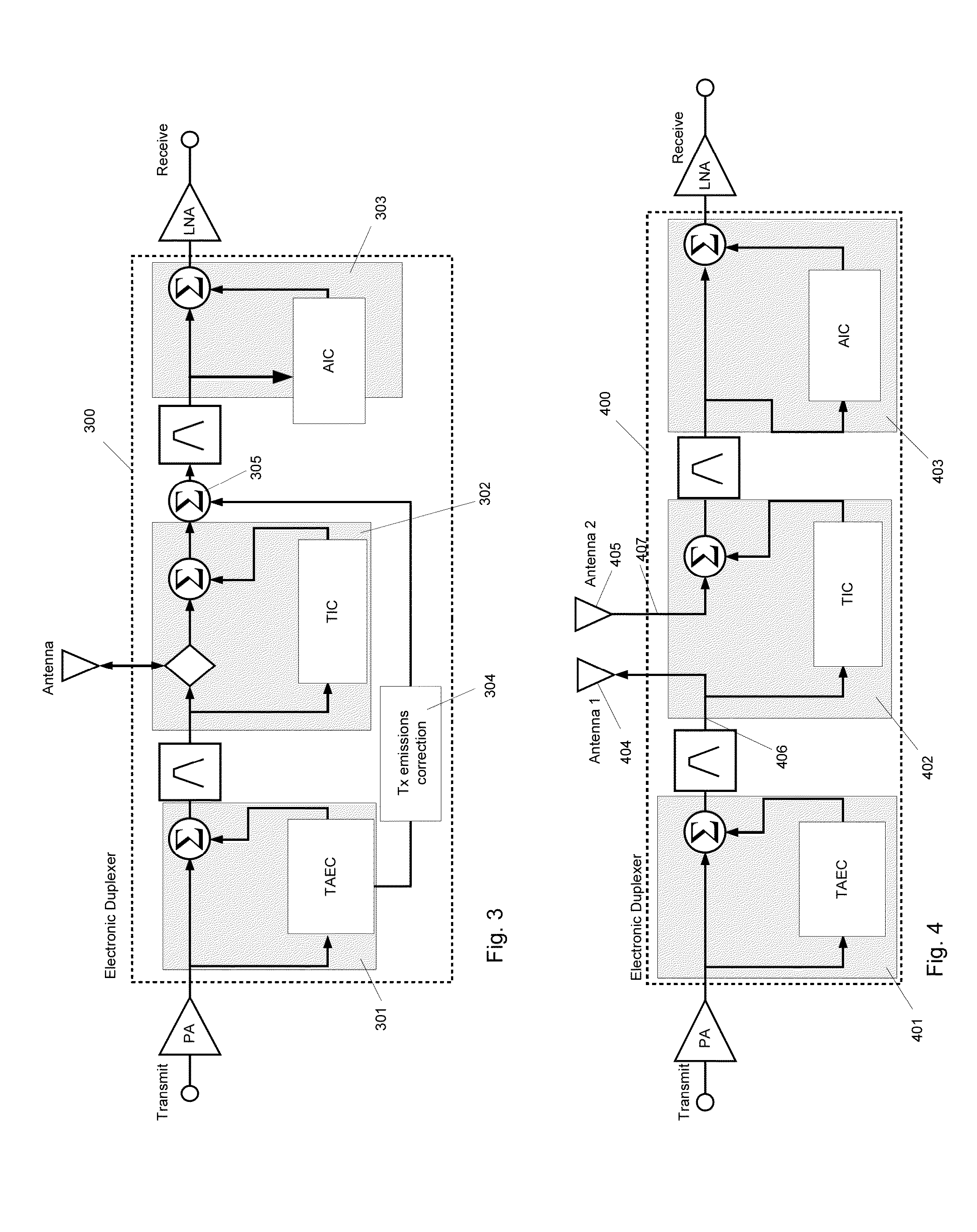Electronic duplexer
- Summary
- Abstract
- Description
- Claims
- Application Information
AI Technical Summary
Benefits of technology
Problems solved by technology
Method used
Image
Examples
Example
[0037]FIG. 5 shows a block diagram of an electronic duplexer according to a fifth embodiment of the invention. This embodiment is similar to the first embodiment of FIG. 1, however, in FIG. 5, the main path filters have been removed such that the radio system relies on the correction abilities of the FFCLs to provide all the signal rejection required to meet the radio system operational requirements. The lack of filters in the main path provides the potential for maximum frequency agility.
Example
[0038]FIG. 6 shows a block diagram of a sixth embodiment of the invention. This embodiment illustrates the use of FFCLs in a general N×M MIMO system with multiple (N) transmitters and multiple (M) receivers.
[0039]Each TX branch has its own TAEC and each RX branch has it's own AIC. In the most general case of N×M MIMO (N TX, M RX) then a TIC is needed for each TX to every RX.
PUM
 Login to view more
Login to view more Abstract
Description
Claims
Application Information
 Login to view more
Login to view more - R&D Engineer
- R&D Manager
- IP Professional
- Industry Leading Data Capabilities
- Powerful AI technology
- Patent DNA Extraction
Browse by: Latest US Patents, China's latest patents, Technical Efficacy Thesaurus, Application Domain, Technology Topic.
© 2024 PatSnap. All rights reserved.Legal|Privacy policy|Modern Slavery Act Transparency Statement|Sitemap



